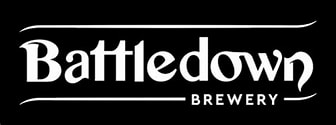Latest News
How does the going affect racing?
This winter has been among the wettest on record. The number of abandoned fixtures has been above average, not because of snow or frost, but waterlogging. And weather can have a dreadful impact both on the quality of what we watch on the racecourse, but also the financial viability of fixtures that rely on spectator revenue to sustain them.
Those of us who follow Point-to-Point racing like to think that wet weather is merely an inconvenience. We're made of sterner stuff than to be put off by a little wet! However, as those that were at Cocklebarrow at the end of January will testify, even the most stout-hearted can get a little down when the rain is blowing sideways, upwards and every which way!
Weather then has a major impact on horse racing and it can be the reason racemeetings in the United Kingdom and Ireland are called off. And weather, in one form or another, has played a role in each of the major racing festivals in the UK - the Cheltenham Festival, Grand National, and Ascot over the decades. Remember Windy Wednesday when a hurricane tore chunks off the temprary structures at Cheltenham, forcing the cancellation of the second day of the Festival? What a treat that created in store for the next 2 days with nine race cards full of championship events!
The Grand National 2020 is fast approaching with the top jockeys, trainers, and horse ready to compete for the prized trophy. Punters are debating which horse will win and Ladbrokes grand national betting gives them the chance to get bet bonuses and offers before the race.
Frost and snow is every race Clerk or Fixture Secretary's dread. Rain we can normally cope with. But what impact does the weather have on the horses that provide our entertainment?
The Going
Jumps racing in the UK and Ireland takes place on grass. Wet weather can make it difficult for horses to run. Conversely, warm and dry weather can also make it difficult for other horses to compete to their best form. Certainly some of a horse's performance can be down to its ability to run in certain conditions and on specific ground.
The Going is a term used to describe the condition of a racetrack. If you are betting on horse races, it is a term you will hear or read when making a wager. The going should never be ignored when wagering on a horse race. Racing fans will discuss the state of the ground until the cows come home. And ther state of the ground, despite being the same for every runner, is a first line of defence for any trainer seeking reasons why his horse didn't perform to his best ability.
There are four types of going that are produced. If a racecourse experiences little rain, it is warm, and dry, then the going can be listed as “good” or “good to firm”. This means that the ground is solid under the horses’ hooves and will not give way when the race is being run. The BHA ruled that Hard ground was no longer raceable some years ago to reduce injury rates among runners - a stipulation well received by horsemen and spectators alike. Late spring and summertime can see race tracks experience “good” or “good to firm” conditions. Speedy race horses can excel on dry conditions while horses that benefit from wet conditions may struggle.
Wet and cold weather can produce “good to soft”, "soft", and “heavy” race conditions. Winter and early spring are notable in the UK and Ireland for producing turf that is “good to soft” and “heavy”. If there has been a lot of race or snow in the days leading up to the race, then the turf can be soft underfoot. Look out for a going description when you arrive at the course, or in the newspaper or Tv programme you're tuned into.
Why the going matter to punters
The going can be an equaliser for horses. When speedy horses struggle in soft conditions, then horses that run well in wet weather can overcome the faster horses. Often this will be down to a horse's action - the way in which his stride pattern is created. Horses that excel in the soft have a rounded action like the back hoe of a digger. Top of the ground horses - daisy cutters - have a straighter, more raking stride. When betting on horse races, it is always important to research the going and the horses’ recent experience on similar surfaces. A winner of the Welsh National in bottomless Monmouthshire ground in December is not a nailed-on certainty in the lighter Spring ground of Aintree 4 months later. Horses for courses...
If you consider wagering on a horse that struggled in his last two races on “heavy” turf, then you should re-think your bet. The going has a significant impact on a race no matter how big or small it is. Before taking a punt on this year’s Cheltenham Festival or Grand National, be sure to get the going report ahead of making your final selection.
Andoversford spectators are well used to any sort of ground. Over the past few years, we'e endured heavy ground and good. Often the racecourse rides better than the car parks! One thing is for sure; knowing which horses do best on which ground is a key piece of knowledge in ensuring you enjoy a profitable day.
Event details
Buy your tickets nowOur Sponsors








.png)









